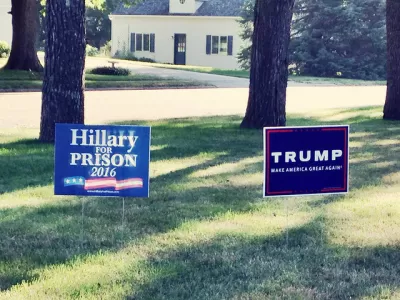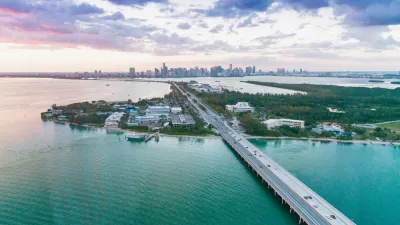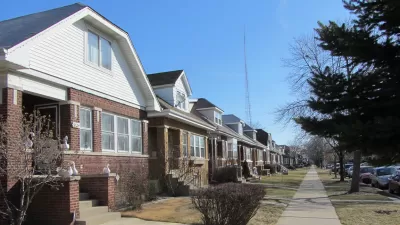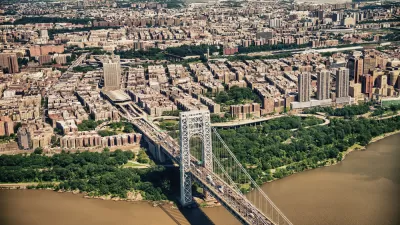Forget red state versus blue state: a new data analysis and mapping project by The New York Times shows that the political divides in the country can be mapped to the neighborhood level within metropolitan areas.

Emily Badger, Kevin Quealy, and Josh Katz present an info-graphic-rich data journalism feature that reveals the partisan divides evident in the geography of the United States—in far greater detail than the red-blue and urban-rural divide that is already searingly rendered on so many elections maps. The big surprise of this exercise: the partisan dive of U.S. communities is visible at the local level, within urban areas.
"Democrats and Republicans live apart from each other, down to the neighborhood, to a degree that raises provocative questions about how closely lifestyle preferences have become aligned with politics and how even neighbors may influence one another," according to the article.
The analysis is made possible by analyzing the individual addresses for 180 million registered voters. The data reveals that "nearly all American voters live in communities where they are less likely to encounter people with opposing politics than we’d expect."
Maps of Los Angeles, Chicago, Dallas, and New York top the article, but the same patterns are visible in Atlanta, Baltimore, Austin, Indianapolis, Boston, Cincinnati, Charlotte, Detroit, Birmingham, Columbus, Denver, Houston, and more.
As for what explains these patterns, the article suggest that geographic alignment follows educational realignment,"with the changes concentrated in highly educated suburbs and more working-class towns and rural communities." Racial segregation also plays a factor in partisan clustering, according to the article. "African-American voters in particular are overwhelmingly Democratic and also residentially segregated (metro Milwaukee’s map of partisan segregation, for one, resembles its map of racial segregation)."
A lot more analysis on both cause and effect is included in the source article.
FULL STORY: A Close-Up Picture of Partisan Segregation, Among 180 Million Voters

Planetizen Federal Action Tracker
A weekly monitor of how Trump’s orders and actions are impacting planners and planning in America.

Congressman Proposes Bill to Rename DC Metro “Trump Train”
The Make Autorail Great Again Act would withhold federal funding to the system until the Washington Metropolitan Area Transit Authority (WMATA), rebrands as the Washington Metropolitan Authority for Greater Access (WMAGA).

The Simple Legislative Tool Transforming Vacant Downtowns
In California, Michigan and Georgia, an easy win is bringing dollars — and delight — back to city centers.

DC Backpedals on Bike Lane Protection, Swaps Barriers for Paint
Citing aesthetic concerns, the city is removing the concrete barriers and flexposts that once separated Arizona Avenue cyclists from motor vehicles.

In These Cities, Most New Housing is Under 441 Square Feet
With loosened restrictions on “micro-housing,” tiny units now make up as much as 66% of newly constructed housing.

Albuquerque’s Microtransit: A Planner’s Answer to Food Access Gaps
New microtransit vans in Albuquerque aim to close food access gaps by linking low-income areas to grocery stores, cutting travel times by 30 percent and offering planners a scalable model for equity-focused transit.
Urban Design for Planners 1: Software Tools
This six-course series explores essential urban design concepts using open source software and equips planners with the tools they need to participate fully in the urban design process.
Planning for Universal Design
Learn the tools for implementing Universal Design in planning regulations.
Smith Gee Studio
City of Charlotte
City of Camden Redevelopment Agency
City of Astoria
Transportation Research & Education Center (TREC) at Portland State University
US High Speed Rail Association
City of Camden Redevelopment Agency
Municipality of Princeton (NJ)





























